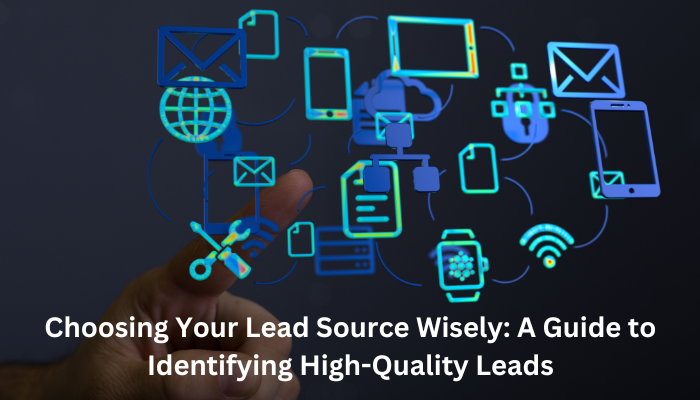
Choosing Your Lead Source Wisely: A Guide to Identifying High-Quality Leads
February 22, 2024 Comment off
In the dynamic world of digital marketing, the quality of your leads can make or break your business. With an array of lead sources available, from social media campaigns to pay-per-click (PPC) advertising, email marketing, and beyond, it’s crucial to identify which sources bring in leads that not only fill your funnel but also convert. This guide, inspired by insights from the Lead Generation World Conference, will help you navigate the complexities of choosing the most effective lead sources for your business model.
Understanding Lead Quality
Lead quality refers to the likelihood of a lead converting into a customer. High-quality leads are those that have a genuine interest in your product or service and are in a position to make a purchase. The challenge lies in identifying which sources consistently deliver these high-caliber leads.
Analyzing Lead Sources
- Social Media: Platforms like LinkedIn, Facebook, and Instagram offer targeted advertising options to reach specific demographics. The key is to tailor your content to the interests and needs of your ideal customer profile.
- SEO and Content Marketing: By optimizing your website and producing valuable content, you attract leads actively searching for solutions that your business offers. These leads often have a higher intent to purchase.
- PPC Advertising: While PPC can drive a high volume of leads quickly, it’s essential to focus on keywords that indicate buying intent rather than just information seeking.
- Email Marketing: A well-segmented email list can be a goldmine for high-quality leads. Personalized email campaigns that address the specific needs and pain points of your audience can drive significant conversions.
- Referrals: Never underestimate the power of word-of-mouth. Leads that come through referrals from satisfied customers or partners tend to have a higher trust level and conversion rate.
Selecting the Right Lead Sources for Your Business
The effectiveness of a lead source varies by industry, business model, and target audience. Here are steps to identify the best sources for your business:
- Set Clear Objectives: Define what you consider a high-quality lead by setting clear, measurable objectives based on your sales and marketing goals.
- Track and Measure: Use analytics tools to track the performance of different lead sources. Look at metrics like conversion rates, cost per lead, and return on investment (ROI).
- Test and Refine: Experiment with different channels and strategies. A/B testing can help determine what works best for your target audience.
- Listen to Your Sales Team: Your sales team’s feedback on lead quality can provide invaluable insights into which sources are producing the most sales-ready leads.
The Role of Technology in Lead Generation
Advancements in technology, particularly in artificial intelligence (AI) and machine learning, are transforming lead generation. Tools that automate lead scoring and segmentation can help prioritize leads most likely to convert, ensuring that your sales team focuses their efforts where they’re most needed.
Choosing the right lead sources is not a one-size-fits-all process. It requires a deep understanding of your market, continuous testing, and refinement of your strategies. By focusing on lead quality over quantity, you can ensure that your marketing efforts yield the best possible ROI. The Lead Generation World Conference provides a platform for lead generators and buyers to share insights and strategies, helping businesses navigate the lead generation ecosystem more effectively. Remember, the goal is not just to generate leads but to generate leads that convert.